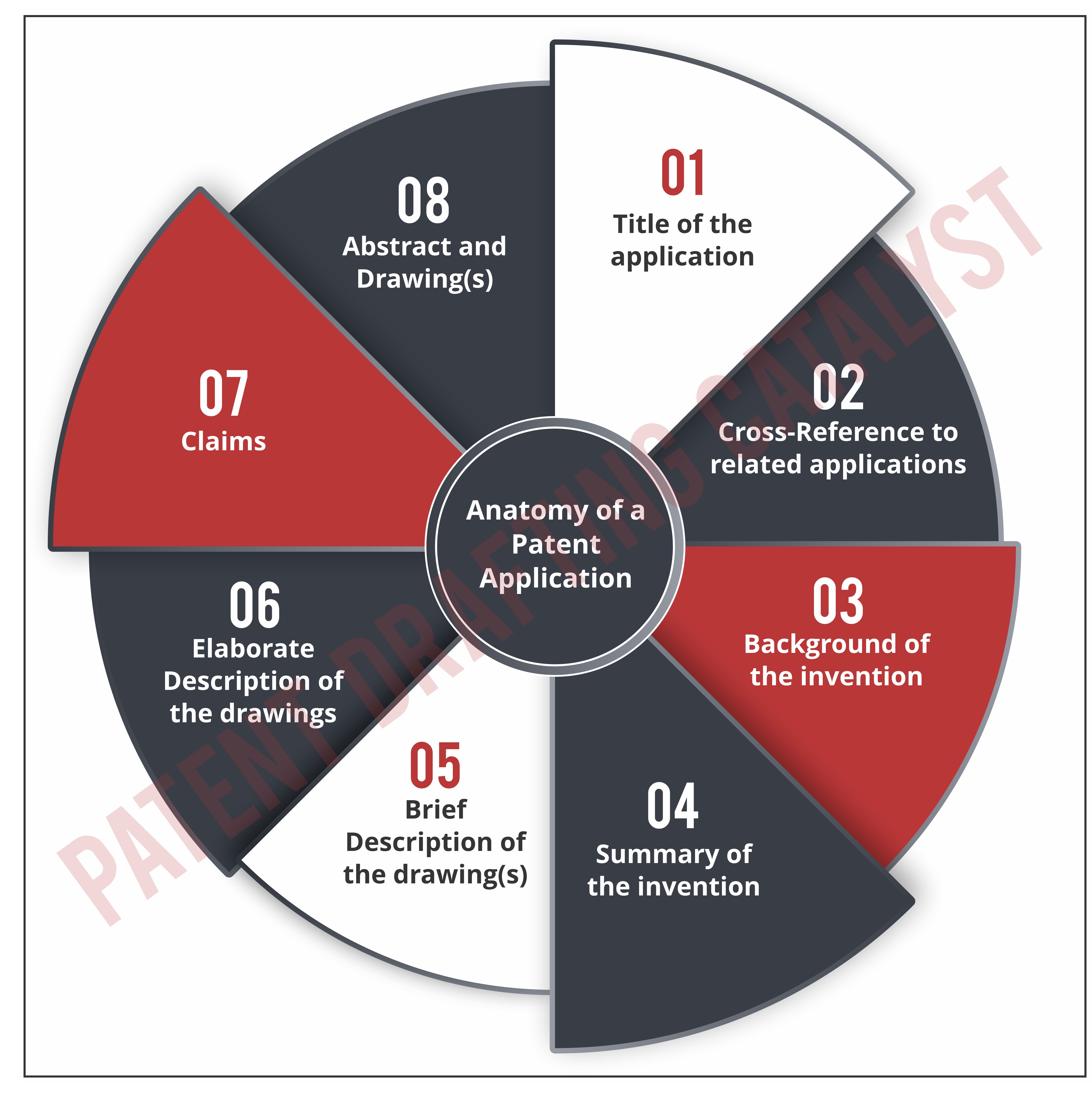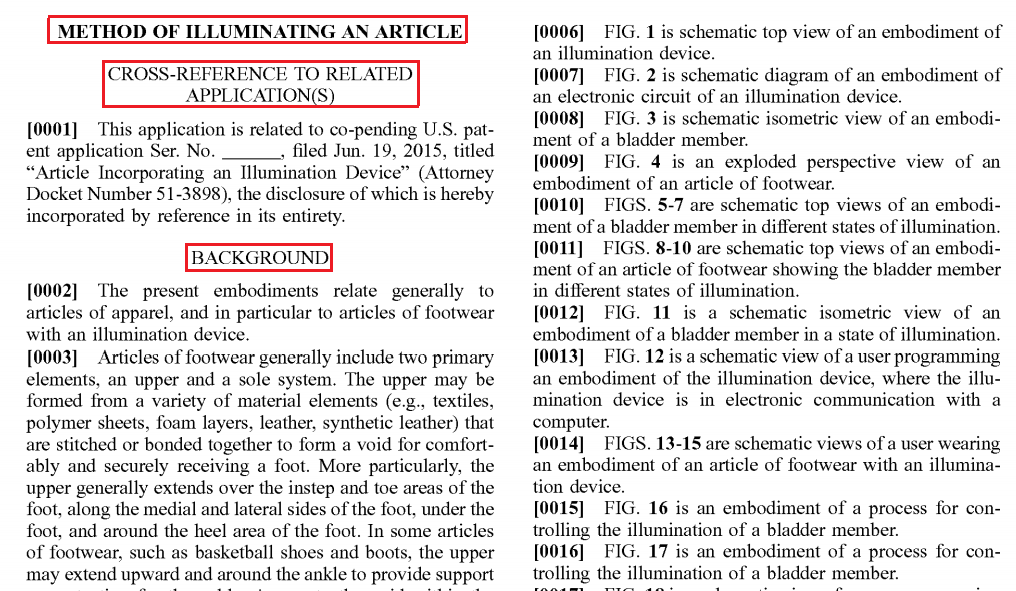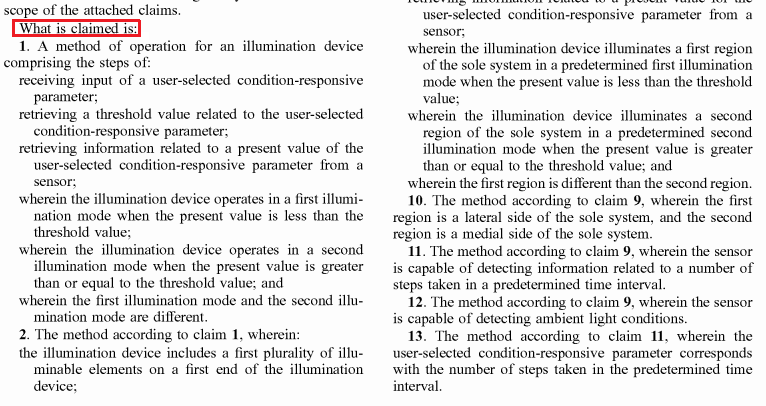If you are planning to protect your invention, then you obviously need to know how to write a patent. You simply cannot understate the importance of the different sections, especially the patent claims. They can be tedious to write because of the peculiarity of the guidelines laid down by the USPTO. You may wish to write a patent application on your own. But it is important to understand that it is not easy to write a patent. But don’t worry; we’re here to give you a comprehensive guide to write a patent yourself.
Anatomy of a Patent Application
Let’s first understand the basic outline of a patent application. While drafting, the application will primarily include these sections.
- Title of the application
- Cross-Reference to related applications
- Background of the invention
- Summary of the invention
- Brief Description of the drawing(s)
- Elaborate description of the drawings
- Claims
- Abstract and Drawing(s)
The draft needs to follow this order. However, it’s advisable to start off with drafting the claims section first as it’s the most important part of the patent. It forms the basis for the rest of the application. Writing the claims will also pave the path for your drawings because you’ll be sure to cover the relevant areas. We’ll further see how to write the important sections of the applications.
Also, see Patent Drafting: A guide for beginners.
Take a look at this patent application from Nike, for an illuminating shoe. Notice how it mentions the title, “Method for Illuminating an article”. It is simple and crisp. The entire application is 39 pages long. It contains elaborate drawings and the description goes on for about 11 pages. This is to ensure that the patent has very broad and comprehensive protection.
Fig. Patent Application by Nike
Write a patent – How to draft the claims?
We’ve already made the importance of the claims section clear. Let’s understand the drafting of the claims section in detail.
Declarations
First, you should work on two declarations, one broad and general, and the other one more specific. The first declaration should describe the broad terms of your invention, without any pointless ideas. The second declaration should describe your invention more specifically, considering all the realistic possibilities. This is important because the claims need to be current and must have an applicable scope, some broad and some specific. After doing this, you have a broad and generic model of your invention and a very specific one. Check out Omnibus Claim: Importance of Narrow and Broad Claim Scope and Antecedent Basis.
Characteristics of the Claims (and hacks)
Let’s dive deeper into the important characteristics of the claims. The crucial points to keep in mind while drafting the claims are:
- The claims should be complete.
- They should have adequate support in terms of what area they intend to cover.
- The claims should be precise.
The claims should be written such that each claim must be its own sentence and it should be clear to the reader. You must ensure that you don’t use lengthy technical language by using words like “strong”, “major part”, “such as”, etc. This can prove to be the differentiating factor in your application. Each claim identifies the innovative features of the invention and the elements that put the claim in context. Make sure to support the claim in the description section by explaining your invention elaborately.
Also Read: Multiple Dependent Claims: Why do we need them?
Claim Structure
The structure of every claim should be as follows:
- Introductory phrase – This phrase introduces the invention and often the purpose of the invention.
- The body – This is the legal description which entails the exact ideas that you are seeking protection for.
- Interlink between the two – This section links the body and introductory phrases. It’s important for how restrictive or permissive a patent is.
In conclusion, the claims section is the heart of your application. Everything else, from drawings to description, should revolve around the claims. The claims define the legal boundaries of your patent so they need the utmost care and attention during drafting.
Also, check out Jepson Claims: Know the Importance.
Continuing the previous patent application example from Nike, we will take a look at their claims:
Fig. Claims section of an application by Nike
This claims section goes on for another 2 pages and lists all possible uses of the invention. This ensures that nobody thinks of infringing because the scope of the claims is incredibly vast.
Also read: US Patent Proofreading – with USPTO Best Practices
Tips and Tricks to Write a Patent
You need to make your application stand out, so you require a few hacks which will help you achieve it. Let’s read about them now:
- Description of Embodiments: Inventors often get confused between “different embodiments of the invention” and “different embodiments”. You must understand that your invention has more than just one model. If you don’t describe something, then it isn’t a part of your invention.
For example, consider that you say that your invention comprises of the components A+B+C+D. If someone else presents an almost identical invention but leaves out certain components, then it wouldn’t be an infringement. That’s because your claim meant that the invention is complete when it has all 4 components A, B, C, and D together. Your description is too narrow. So you must understand the embodiments of your invention and make sure that it is not subject to exposure.
- Usage of the invention: You should describe alternate models of your invention. These need not be specific, but you should still describe it. Inventors should consider the different ways in which their invention can be put to use. This is to ensure that your protection is all-encompassing and comprehensive.
- Terminology: You must make sure that the terminology you use is the best fit. It shouldn’t be incorrect or ambiguous at any point because that can lead to exposure. It’s best to hire a professional to draft your application. But, if that is too expensive then you should seek advice on the quality of your draft from a professional.
- Enablement Requirement and Drawings: When you write a patent application, you must describe all of your inventions that would clarify how to make and use it. You must explain how all the parts of your invention work and interrelate to each other. Further, you must use the drawings wisely. The drawings give a clearer understanding of your descriptions because they provide visuals. An examiner may be able to get an idea about your invention by looking at the descriptions. But when he/she sees the drawings, there will be no doubt left at all.
Need a Professional to Draft your Application? – Patent Drafting Catalyst
Patent Drafting Catalyst provides expert patent drafting services to inventors and businesses looking to protect their intellectual property. Whether you need provisional patent application drafting or non-provisional patent application drafting, our team ensures that your application meets all legal requirements and industry standards. We guide you through the complexities of patent claims, descriptions, and drawings, ensuring your invention is fully protected. With a focus on precision, clarity, and comprehensive coverage, Patent Drafting Catalyst offers a seamless experience for drafting and filing patent applications. Trust us to help you safeguard your innovation with professional expertise and attention to detail.


